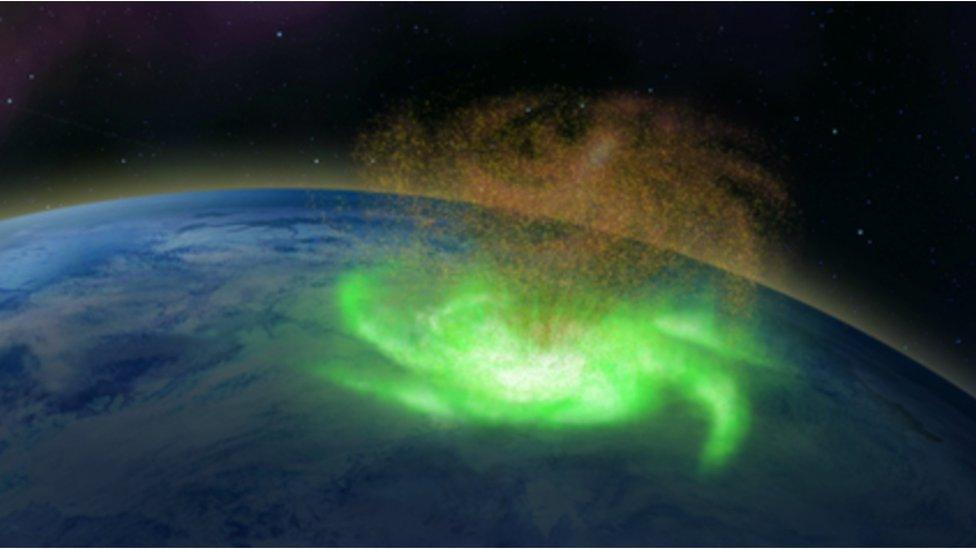Space hurricane spotted above the North pole
- Published
- comments

Check out this cool 3D model image of a space hurricane above the North Pole!
Scientists have observed a space hurricane swirling above the North Pole for the first time.
The space hurricane was spotted by scientists from China's Shandong University, where they saw a swirling mass of plasma that behaved a lot like the hurricanes here on Earth - except these space hurricanes rain electrons instead of water!
The space hurricane was spotted across 1,000km, above the North Pole. Similar to hurricanes found inside Earth's atmosphere, it turned in an anti-clockwise direction and lasted for almost 8 hours.
Professor Mike Lockwood, a space scientist at the university of Reading said: "Until now, it was uncertain that space plasma hurricanes even existed, so to prove this with such a striking observation is incredible".
The space hurricane has similarities to hurricanes we see in Earths lower atmosphere
Scientists analysed satellite observations made in 2014 and created a 3D model of the Hurricane in Earth's ionosphere. The ionosphere is a part of the Earth's atmosphere, which has electrically charged gases known as ions - hence the name!
The space hurricane has many similarities with hurricanes in Earths lower atmosphere, such as a quiet centre, that you can see in the picture above, and widespread circulation.
The findings opens up the question of whether this space activity is something that other planets experience too.
Are we the only planet that can experience space hurricanes?
Scientists believe that space hurricanes could occur around other plants or moons that have magnetic fields and plasma.
Professor Mike Lockwood said: "Plasma and magnetic fields in the atmosphere of planets exist throughout the universe, so the findings suggest space hurricanes should be a widespread phenomena."
It's expected the findings could explain further impact of space weather on radio communication systems and satellite data.
- Published2 March 2021
- Published2 March 2021
- Published2 March 2021
